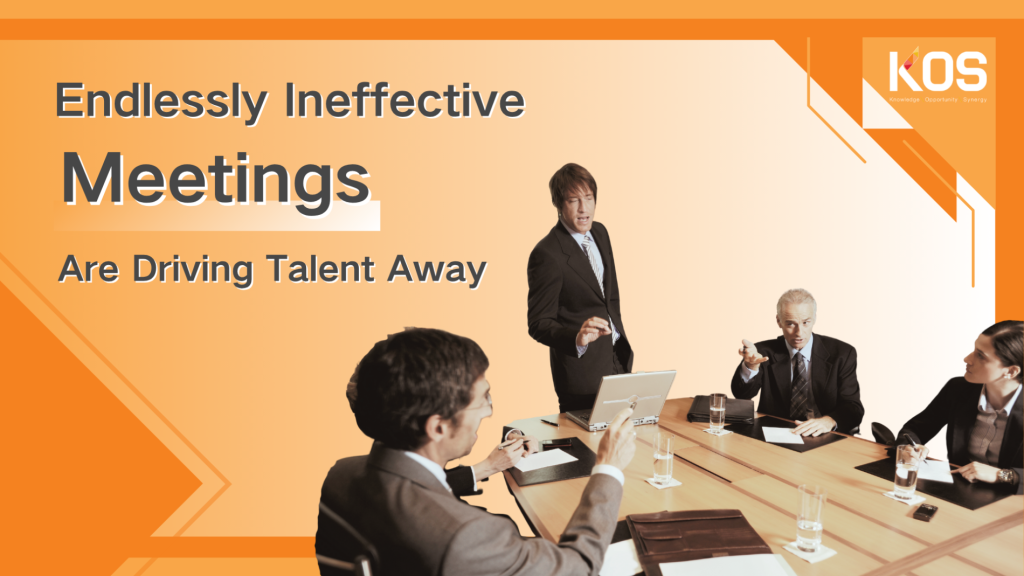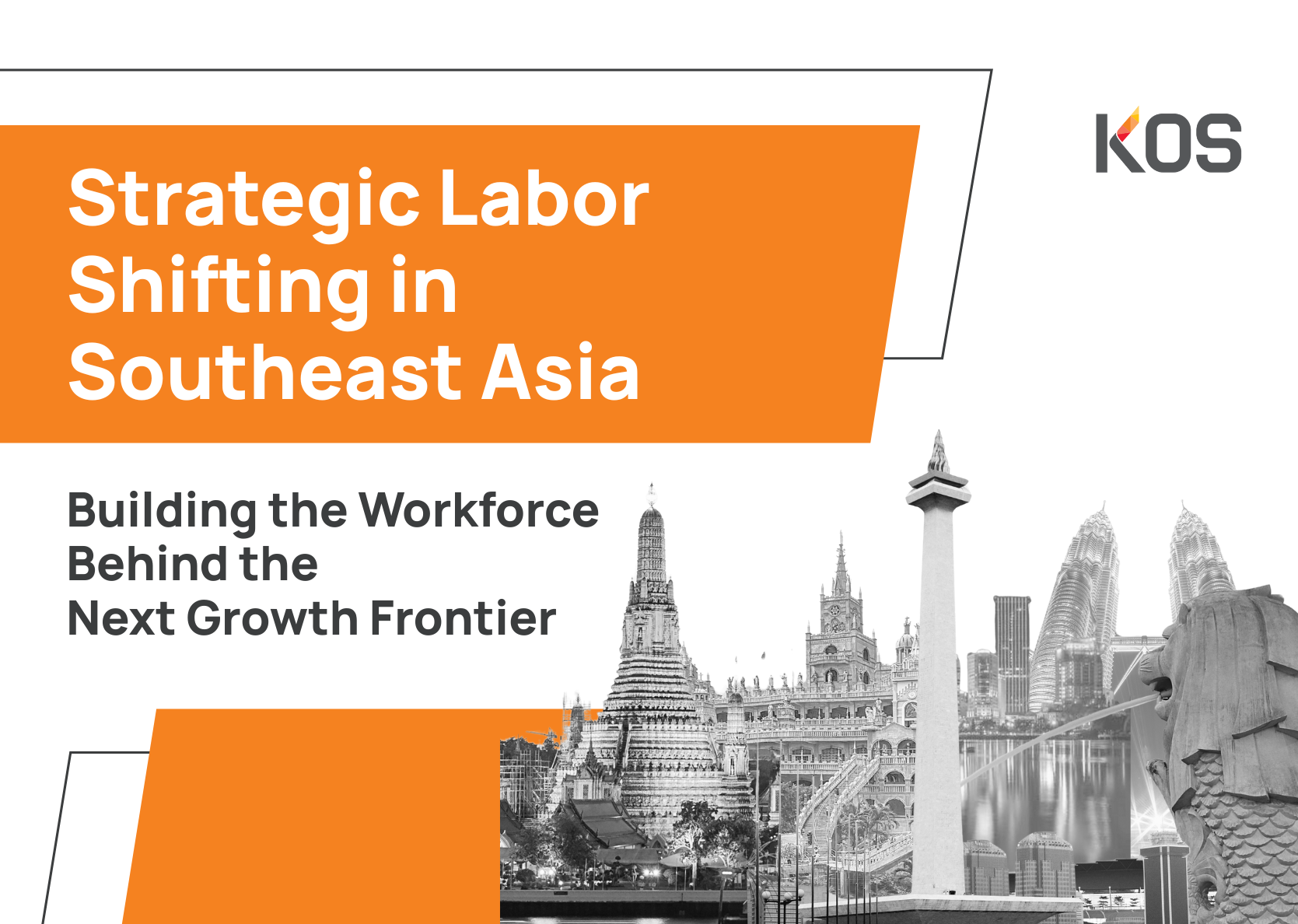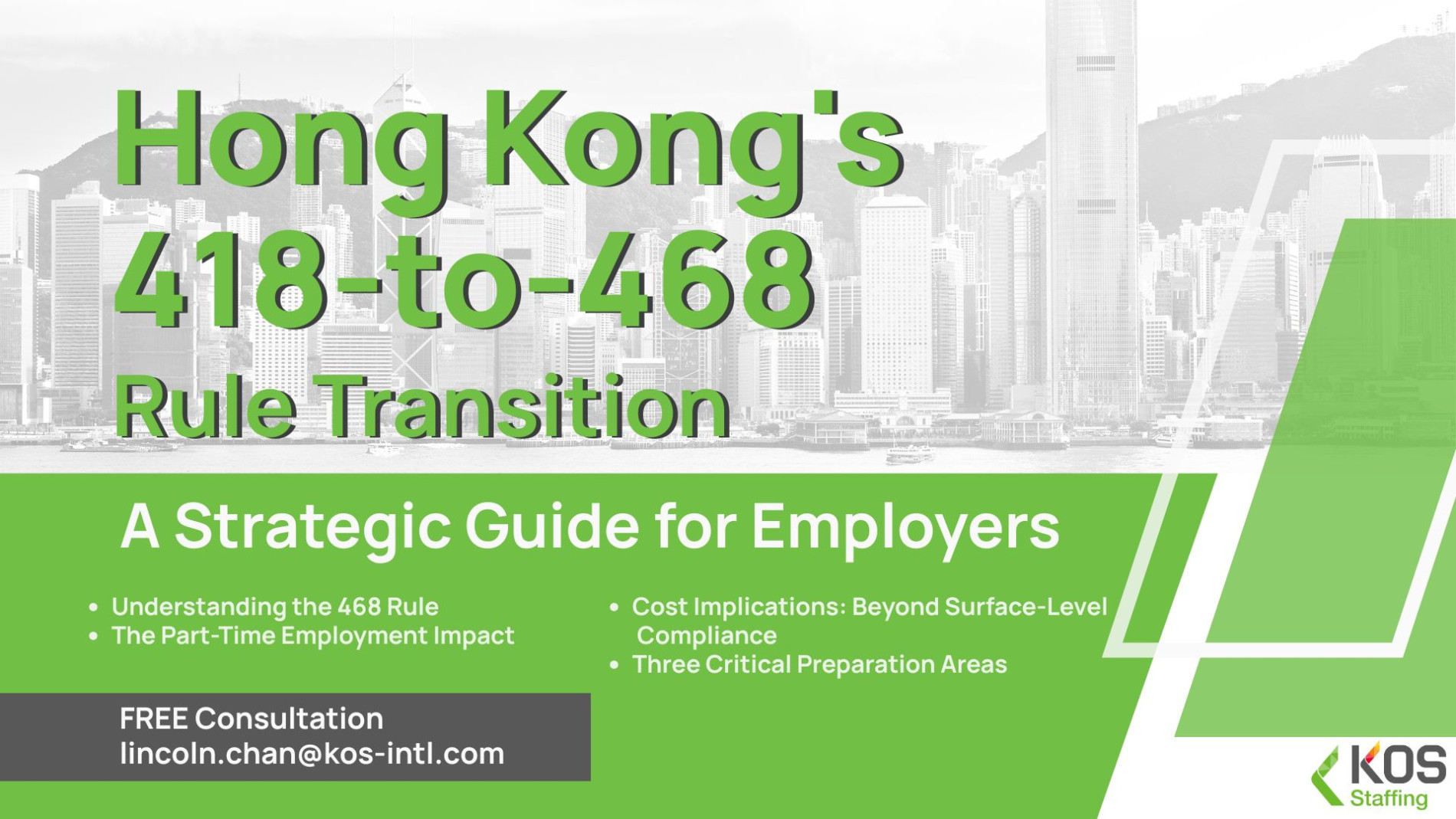Endlessly Ineffective Meetings Are Driving Talent Away
5 mins read

Social media platforms are buzzing with complaints about “useless meetings” and “meanlessing meetings”:
“Daily stand-ups, big meetings every three days, and somehow, meetings last longer than actual work hours. “
“If meetings actually solved problems, I’d be fine with them. But too often, they turn into blame-shifting sessions: ‘That’s not my job,’ or ‘Talk to someone else.’ Without meetings, projects stall; with meetings, they stall even more.”
At its core, the frustration isn’t with meetings themselves but with pointless, performative “pseudo-meetings” that feel like going through the motions. Over time, these endless meetings become a drain, pushing out employees who just want to do meaningful work and even damaging an employer’s brand reputation.
Today, KOS International, a leading recruitment firm in Hong Kong SAR, explores why meetings have become ineffective and how to steer them back to being a tool that empowers teams to succeed.
1.The Real Cost of Low-Quality Meetings
Low-quality meetings do more than waste time. They erode operational efficiency, create ripple effects, and harm talent retention and employer branding.
For talent retention, top performers stay to create value, not to burn out in endless, unproductive meetings. When meetings fragment the workday, core tasks get pushed to overtime, leading to chronic overwork. This not only drives employees away but also damages employer reputation in ways companies can’t afford.
Today’s job seekers are savvy, using platforms and social media to research a company’s true work environment. A single comment from a former employee, like “The boss schedules meetings during lunch breaks,” can spread faster and carry more weight than an expensive employer branding campaign. In conversations with KOS International consultants in Hong Kong SAR, candidates frequently ask about a company’s culture, specifically whether it has a “meeting-heavy” or “high-pressure” environment. Job seekers increasingly prioritize efficient, equitable workplaces, and rigid, inefficient meeting cultures are seen as red flags signaling outdated management practices.
2.Meetings Aren’t the Problem. Ineffective Meetings Are.
Meetings are management’s most common but most misused tool, revealing core leadership issues:
• Lack of Decision-Making: Many meetings drag on without resolution due to unclear roles. Who proposes, who advises, who decides? Without this clarity, meetings are doomed to waste time.
• Dodging Accountability Through Group Decisions: Rather than one leader owning decisions and consequences, meetings spread responsibility thin, diluting accountability among participants.
• Overuse to Regain Control: In uncertain business environments, leaders crave control through frequent meetings, exhaustive questioning, and lengthy updates, using process certainty to mask anxiety over uncertain outcomes.
How do top companies approach meetings? Amazon’s CEO Jeff Bezos replaces PowerPoint with one- or six-page memos, which attendees read silently at the start of meetings to spark focused discussion. Tesla’s CEO Elon Musk has said, “If you’re clearly not adding value, leave the meeting or hang up.” MINISO’s CEO Ye Guofu bans internal PowerPoint entirely, advocating for “fewer meetings, shorter meetings, and useful meetings.” He caps meetings at 30 minutes (one hour max), limits reports to three pages, and stops discussions that fail to reach a conclusion after three rounds.
These leading companies treat efficient meetings as a cornerstone of operational success and talent attraction. Their practices reflect a shared belief: the quality of meetings mirrors the quality of management. Efficient meetings show respect for employees’ time and contributions. It’s time to rethink how we meet.
3.Three Practical Tips to Regain Meeting Effectiveness
Transforming meetings into valuable tools doesn’t require a complete overhaul. These three strategies can deliver quick, impactful improvements without adding to the managerial burden:
• Before the Meeting: Clarify Three Key Questions to Avoid Aimless Discussions
– What specific problem is this meeting solving? For example, “Set the budget and plan for next month’s promotional campaign,” not a vague “Let’s talk about promotions.” Share the agenda and supporting materials in advance.
– Who absolutely needs to attend? Invite only those directly relevant (e.g., finance and operations leads). Don’t drag in unrelated team members to “observe.” Amazon’s “two-pizza rule” suggests that if a meeting requires more people than two pizzas can feed, it’s too big.
– What’s the expected outcome? For example, confirm the budget amount and assign responsibilities, not just brainstorm ideas.
Reduce formalism by eliminating mandatory PowerPoint presentations. Amazon’s memo approach is a great example. Where feasible, prioritize virtual communication through video calls or collaboration tools to boost efficiency.
• During the Meeting: Focus on Two Priorities to Avoid Wasted Discussion
– Control the Pace: If the conversation veers off-topic (e.g., someone starts discussing competitor trends), gently redirect: “That’s a great point. Let’s schedule a separate discussion for it. For now, let’s focus on finalizing the budget.”
– Assign Clear Responsibilities: Once a decision is made, specify “who does what by when.” For example, “Finance Manager Lee will finalize the budget by Wednesday, and Operations Lead Hong will prepare the campaign plan.” This prevents post-meeting confusion about next steps.
• After the Meeting: Follow up promptly.
Meetings often fail not because of poor discussions but due to lack of follow-through. Within 24 hours, share a To-Do List outlining tasks, owners, deadlines, and schedule a progress check. For example, follow up by Friday on tasks assigned Monday, checking “What’s done, and what needs support?”
KOS Recommendations
The goal of meeting reform is to ensure every meeting is worth having. Free employees from pointless meetings so they can focus on work that creates value.
Ultimately, managers and employees share the same goals: to do great work, attract and retain talent who deliver results, and achieve meaningful outcomes. Success isn’t measured by how many meetings you hold this week but by the results you achieve.
The best workplace culture might just be one where meetings are few but impactful, employees leave on time, and results are always delivered.
For recruitment or job-seeking needs, reach out to our expert consultants! https://www.kos-intl.com/contact-us/
Latest News
View All
19.11.25
Insight, Market Insights
KOS New White Paper Release: Strategic Labor Shifting in Southeast Asia
Southeast Asia is entering a pivotal moment. As companies rebalance supply chains and rethink region...

07.11.25
Insight, Market Insights
Hong Kong’s 418 to 468 Rule Transition: A Strategic Guide for Employers
The Hong Kong Labor Department has announced a significant change to local employment regulations. E...

29.10.25
Company News, KOS China
From Rookie to Recruitment Manager: A Journey of Trust, Tenacity, and True Expertise
“Hey, how’s it going lately?” A booming greeting, brimming with infectious enthusi...

 Hong Kong SAR
Hong Kong SAR  Macau SAR
Macau SAR  Singapore
Singapore  Mainland China
Mainland China 
 Recruitment
Recruitment  Staffing
Staffing  Executive
Executive  Solutions
Solutions  Back
Back 